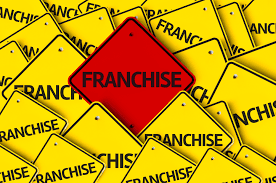Mastering Multi-Unit Franchising: Unveiling Strategies for Success
Embarking on the journey of multi-unit franchising is a significant step that requires a strategic mindset, operational finesse, and the ability to navigate complexities inherent in managing and scaling operations across multiple locations.
In this exploration, we’ll delve into the intricate world of multi-unit franchising, offering valuable insights and strategies to empower seasoned and aspiring franchisees to master the art of multi-unit success.
1. Understanding the Dynamics of Multi-Unit Franchising:
Multi-unit franchising introduces a new layer of complexity compared to single-unit operations. Understanding the unique dynamics of overseeing multiple locations is the first step toward success. This includes recognizing the increased operational constraints, varied market conditions, and the need for a robust support infrastructure.
2.Strategic Site Selection:
Insight: Careful site selection is paramount in multi-unit franchising. Each location’s demographics, foot traffic, and market potential should align with the brand’s target audience and growth strategy.
Strategy:
Thorough Market Research: Conduct comprehensive market research to identify areas with high demand for your product or service.
Collaboration with Local Experts: Partner with local real estate professionals who understand the nuances of each market.
3. Centralized Operations and Decentralized Decision-Making:
Insight: Balancing centralized control with decentralized decision-making is crucial for multi-unit success. Franchisees need the autonomy to adapt to local market nuances while maintaining consistency in brand standards.
Strategy:
Clear Operational Guidelines: Establish clear operational guidelines to ensure consistency in service and product offerings.
Local Empowerment: Empower local managers to make decisions based on their market insights while adhering to overall brand standards.


4.Robust Training Programs:
Insight: Consistent and thorough training is essential to uphold brand standards and ensure a cohesive customer experience across all units.
Strategy:
Comprehensive Onboarding: Develop an extensive onboarding process for new franchisees and employees.
Continuous Education: Implement ongoing training programs to keep teams updated on new products, services, and operational protocols.
5. Leveraging Technology for Efficiency:
Insight: Technology is pivotal in streamlining operations, enhancing communication, and maintaining visibility across multiple units.
Strategy:
Integrated Point-of-Sale (POS) Systems: Implement integrated POS systems for centralized sales, inventory, and customer data tracking.
Collaborative Communication Platforms: Utilize communication platforms to facilitate real-time collaboration and information sharing among units.
6. Performance Metrics and Key Performance Indicators (KPIs):
Insight: Establishing measurable metrics is essential for gauging the success of each unit and identifying areas for improvement.
Strategy:
Define Clear KPIs: Clearly define key performance indicators for each unit, covering areas such as sales, customer satisfaction, and employee performance.
Regular Performance Reviews: Conduct regular performance reviews to assess adherence to KPIs and implement improvements as needed.
7. Cultivating a Unified Company Culture:
Insight: Maintaining a cohesive company culture fosters a sense of unity among multi-unit franchises and reinforces the brand’s identity.
Strategy:
Consistent Brand Messaging: Ensure consistent brand messaging and values across all units.
Employee Engagement Initiatives: Implement initiatives that foster a positive and unified company culture, such as team-building activities and recognition programs.
8. Financial Management and Economies of Scale:
Insight: Achieving economies of scale is a significant advantage in multi-unit franchising, but effective financial management is crucial.
Strategy:
Centralized Procurement: Explore opportunities for centralized procurement to reduce costs through bulk purchasing.
Efficient Resource Allocation: Optimize resource allocation based on performance data, ensuring that financial resources are deployed where they yield the highest returns.
9. Proactive Marketing Strategies:
Insight: Multi-unit franchises require tailored marketing strategies that address the unique needs of each market while maintaining a cohesive brand image.
Strategy:
Localized Marketing Campaigns: Develop marketing campaigns that can be localized to address specific market preferences and trends.
Centralized Branding: Maintain centralized branding to ensure a unified and recognizable image across all units.
10. Continuous Adaptation and Innovation:
Insight: The business landscape is dynamic, and multi-unit franchise success hinges on the ability to adapt to changing market conditions and embrace innovation.
Strategy:
Regular Market Assessments: Conduct regular assessments of market trends and consumer behaviors.
Innovation Hubs: Establish innovation hubs or committees to explore and implement new ideas that align with evolving consumer expectations.


Conclusion: Navigating the Multi-Unit Landscape
Mastering multi-unit franchising requires a delicate balance of strategic planning, operational efficiency, and a deep understanding of the unique challenges of overseeing multiple locations.
By adopting these insights and strategies, franchisees can navigate the complexities of multi-unit operations with confidence, driving sustained growth and success. In a landscape where adaptability is synonymous with triumph, those who embrace these strategies are poised to become masters of multi-unit franchising.
